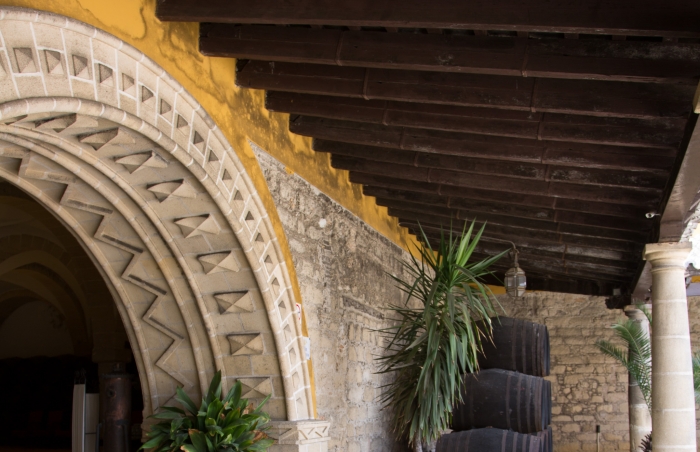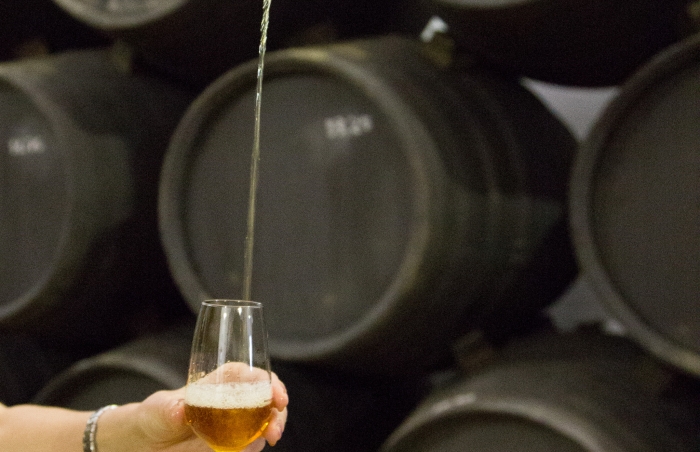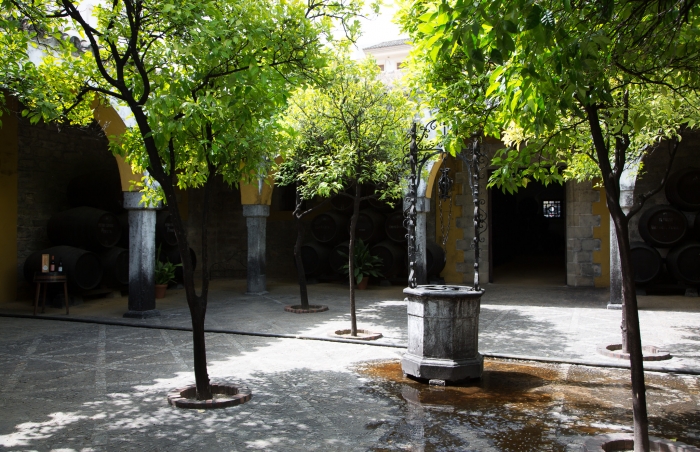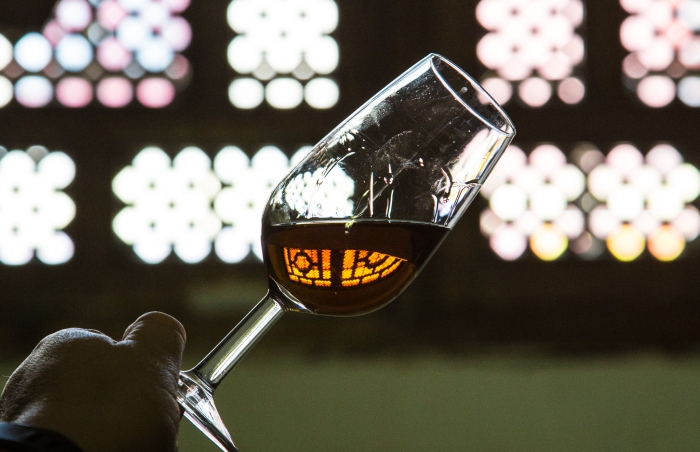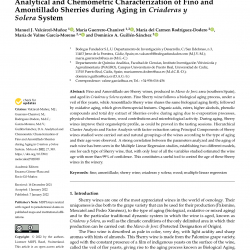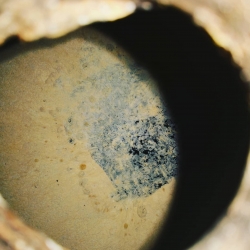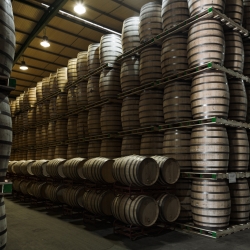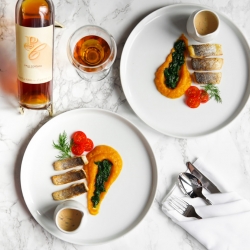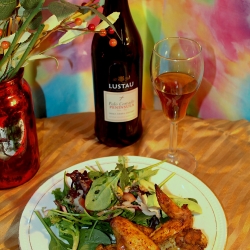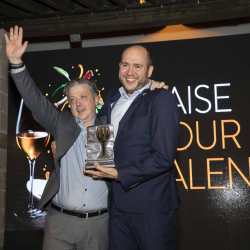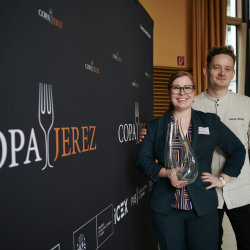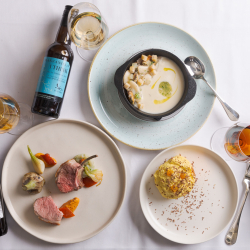A new chapter - behind the scenes at Bodegas Diez Mérito
According to Salvador Espinosa, whose family recently bought the bodega,
many people thought it didn’t exist anymore, as the wines haven’t been very visible in the market in the last few years.
Well, that’s all about to change. More on that later, but where did the story begin?
An illustrious heritage
Bodegas Diez Mérito traces its lineage from two families central to the economic development of Jerez. Salvador Diez Pérez de Muñoz created his wine business in 1876 with his brother. A third brother joined in 1892 and Diez Hermanos was formed. By 1893 they had received a Royal Warrant as suppliers to the Spanish Royal Family.
On his travels to England, Diez saw a steam train for the first time and saw its potential. So he brought one back to Spain. He founded the line between Barcelona and Mataró in Catalunya, and the line between Jerez and El Portal. This was crucial to the growth of Jerez, and the train used to run past various bodegas, enabling them to transport their wines out of town more quickly on a larger scale.
The Mérito side of the bodega’s heritage comes from the brand Marqués de Mérito, founded again in the late 1800s, and incorporating the Marqués de Misa bodega belonging to Manuel Misa y Bertemati. Bertemati began his wine business in Jerez before heading to London to build trade channels with the UK. He brought new farming techniques back to the Sherry Triangle from his travels, and like Diez he was keen on large mechanical souvenirs: he brought the first tractors to Jerez from London.
Diez Hermanos bought Marqués del Mérito in 1979, and in doing so acquired those stunning bodega buildings I’ve walked past so many times. Bertemati built them, and the Bodega Bertemati within the complex is one of the best preserved 17th century bodegas around. So much so that it is designated a ‘bodega de lujo’ – a luxury bodega.
Turning full circle
After changing hands a couple more times, March 2016 saw the announcement that a local family – the Espinosas – had bought Bodegas Diez Mérito. The Espinosas have been part of the sherry world since the early 1980s when they bought their first vineyard. They’ve grown steadily and now have 220 hectares of vinyeards in the Marco de Jerez. At first they supplied Gonzalez Byass but soon became members of the cooperative COVIJEREZ (Cooperativa Vitivinícola Jerezana de Nuestra Señora de las Angustias), where Salvador is the current president.
We believe wholeheartedly in sherry wines, Salvador tells me when I ask why the family decided to buy Diez Mérito. And it’s the obvious next step for us. After acquiring our latest vineyard in 2014 we began making our own wine. Naturally we wanted to progress to ageing our own wines. We chose Diez Mérito because it has some of the finest sherry and brandy soleras in Jerez.
And oh what wines they now have! They’ve acquired three sherry and brandy brands: Pemartin, Mérito and Bertola, as well as three stunning VORS brands. The VORS are the jewels in the Diez Mérito crown – Fino Imperial, which is actually an Amontillado, Victoria Regina Oloroso and Vieja Solera PX.
Fino Imperial is on my desert island sherry list. It’s a natural Amontillado with no alcohol added to kill the flor. It’s aged in a system of 5 criaderas plus the solera, and refreshed with Manzanilla rather than Fino, which preserves a delicacy and freshness alongside some serious muscle. When our guide poured it from the barrel, I could smell it from three feet away – rich, cosy and caramelised. On tasting, all that deep Amontillado richness was there but, despite the years, it still has a bracing breeziness from its time as a Manzanilla. Lovely stuff indeed.
If you’re a brandy fiend, there’s lots here to entertain you too. The Mérito range has 15, 25 and 35 year old options, and then there’s the unthinkably old and rare Solera Especial 1876, which dates back to the foundation of the bodega and is drawn from 14 ‘Botas No’ – barrels marked ‘don’t touch’. The brandy in these barrels has an average age of more than 100 years, and only 100 bottles are released each year. Sadly I didn’t get to try that one, but I did taste the Solera Gran Reserva 1889. It was black like PX, smooth with flavours of coffee, tobaccos and black treacle, and had none of the fieriness I usually associate with brandy.
The next chapter
So what next for Diez Mérito? What will this new chapter look like? The Espinosas have big plans to bring the bodega’s sherries back to sherrylovers locally, nationally and internationally. They will continue to send most of their harvest to the co-op, but from now on they will reserve a selection for making wines to refresh the Diez Mérito soleras.
The top priority is to get Diez Mérito wines’ back in the limelight, behind bars and in people’s glasses.
It’s not an easy task, says Salvador, but anyone who tastes the sherries, every single one of them, loves them and raves about their quality. We’re very conscious that sherry is in the midst of a revolution, a renaissance. It won’t happen overnight but it’s beginning to bear fruit. We want to play our part in that rebirth and revolution.
With the family’s long commitment to the sherry business and their steady growth from that one vineyard to the business they have today, it seems that Diez Mérito is on the cusp of its own renaissance too.
The views and opinions expressed in this article are those of the authors and do not necessarily represent those of El Consejo Regulador.


21 April 2016


